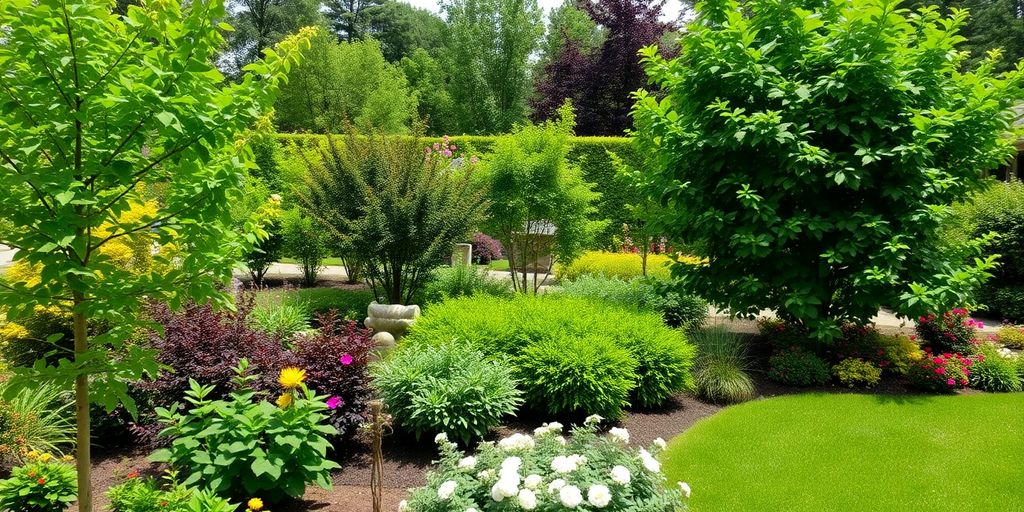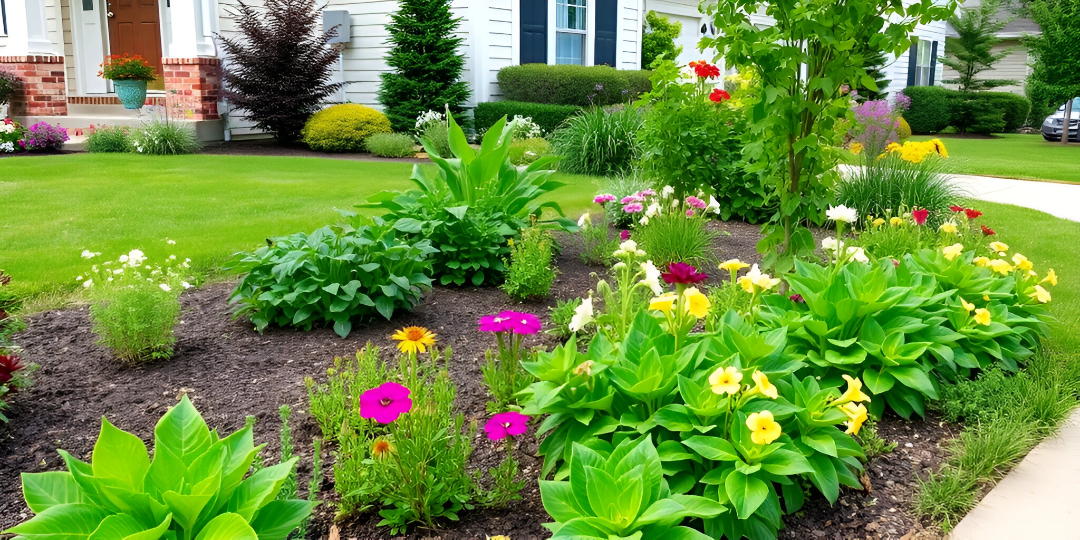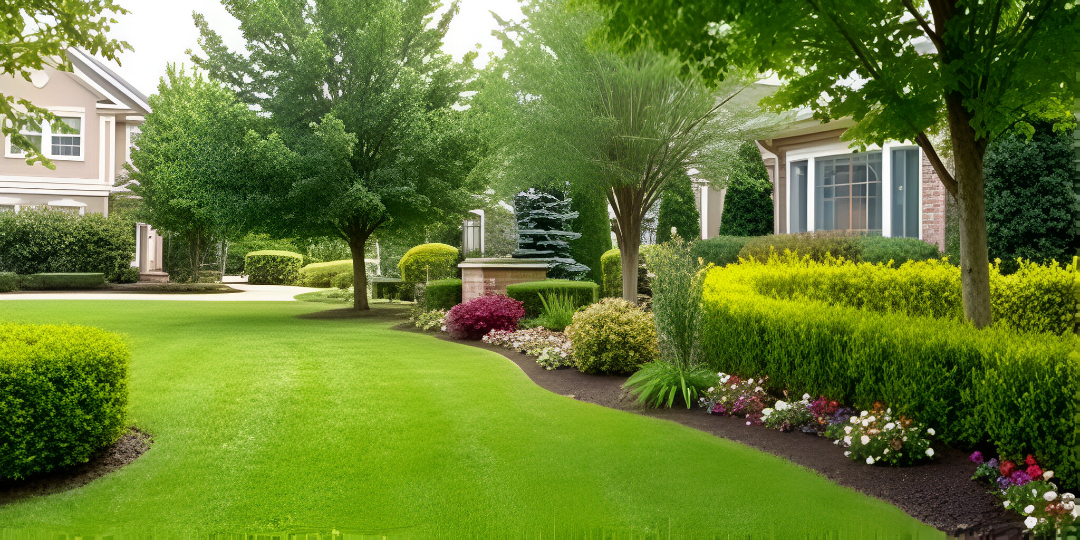So, you’re looking to do some work on your property and want to make sure you’re following the rules? The city has a landscaping bylaw, which covers a significant portion. It’s not just about making things look nice; it’s also about protecting trees, managing plants, and dealing with rainwater. We’ll break down what you need to know about the city of Ottawa landscaping by-law so you can stay on the right side of things.
Key Takeaways
- The city of Ottawa’s landscaping by-law covers topics such as tree protection, managing plants (especially invasive ones), water conservation, and how surfaces handle rain.
- Both people who own houses and those who own commercial or industrial places need to follow these rules.
- You can’t just plant any tree in the boulevard; the city’s forestry service handles that.
- While you can garden in the boulevard area, there are rules about plant height and what you can plant, like no invasive species.
- Hard materials like rocks or pavers aren’t allowed in the boulevard, but mulch is okay if it stays put and doesn’t spill onto the sidewalk or road.
Understanding the City of Ottawa Landscaping Bylaw

So, you’re looking to spruce up your yard, maybe plant a few things, or even tackle a bigger project? It’s great you’re thinking about it, but before you grab your shovel, it’s a good idea to get a handle on the City of Ottawa’s landscaping regulations. These rules are in place to keep things safe and orderly for everyone, and they cover a bunch of different aspects of how we manage our outdoor spaces. Understanding these property maintenance rules is key to avoiding any headaches down the line. Whether you’re a homeowner or manage a commercial property, knowing what’s expected is pretty important. It’s not just about making your place look nice; it’s about following the established Ottawa bylaw tree-cutting rules and general landscaping regulations in Ottawa. We’ll break down what you need to know to stay on the right side of these rules, covering everything from what you can plant to how you manage your yard waste. It’s all part of keeping our city looking good and functioning well.
Tree Protection and Removal
When it comes to trees, the city has specific rules. You can’t just go cutting down any tree you feel like, especially if it’s on city property or a significant size. There are procedures to follow if you need to remove a tree, and sometimes permits are required. This is to protect the urban forest, which is pretty important for our environment. So, if you’re thinking about taking down a tree, definitely check the specifics first.
Vegetation Management and Invasive Species
This part of the bylaw deals with keeping your greenery in check. It means you can’t just let your yard become a jungle of weeds or, worse, invasive species. These plants can spread and cause problems for native plants and local ecosystems. The city has lists of what’s considered invasive, and you’re expected to manage your property to prevent their spread. This also touches on front yard landscaping rules, making sure plantings don’t obstruct views or become a hazard.
Water Conservation and Drought-Tolerant Landscaping
With changing weather patterns, water conservation is becoming a bigger deal. The bylaw might encourage or even require certain approaches to landscaping that use less water. Think about drought-tolerant plants and efficient watering methods. This is all about being responsible with our resources, especially during dry spells.
Permeable Surfaces and Stormwater Management
This is a bit more technical, but it’s about how water moves across your property. The rules often encourage or require the use of permeable surfaces – materials that let water soak through into the ground, rather than just running off. This helps manage stormwater, reduce flooding, and improve water quality. Things like gravel paths or permeable pavers are examples. It’s about managing rainwater effectively right where it falls.
It’s easy to think of landscaping as just a visual thing, but the city’s rules often have deeper reasons tied to environmental health, public safety, and infrastructure. Paying attention to these details means you’re contributing to a better-managed city overall. Plus, it saves you from potential fines or having to redo work.
When you’re planning any work, especially in areas like the boulevard that runs along the street, it’s good to know who owns what. The City’s geoOttawa program can help you figure out where your property line ends and the city’s right-of-way begins. This is important because many landscaping activities, like planting in the boulevard, have specific rules. You generally don’t need a permit for simple gardening projects in the boulevard, as long as you stick to the guidelines, but planting trees is usually off-limits for residents. Also, remember that things like your yard waste disposal bylaw also have specific requirements for how and when you can put yard waste out for collection.
Key Areas Covered by the Bylaw
The City of Ottawa’s landscaping bylaw touches on several important aspects of property maintenance and environmental stewardship. It’s not just about making things look pretty; it’s about protecting our natural resources and managing our urban environment responsibly. Let’s break down what you need to know.
Tree Protection and Removal
This section is a big one. The bylaw outlines specific rules about how trees on your property, especially larger or significant ones, can be removed or pruned. You’ll often need a permit before cutting down a tree that meets certain size or species criteria. It also covers how to protect trees during construction or other activities on your property. This is all about preserving our urban canopy. It’s important to understand what constitutes “good arboricultural practice” to avoid accidentally harming trees.
Vegetation Management and Invasive Species
Keeping your property tidy is part of the deal, but it goes beyond just mowing the lawn. The bylaw addresses the management of vegetation, including requirements to control weeds and prevent the spread of invasive plant species. These aggressive plants can choke out native vegetation and disrupt local ecosystems. You’ll want to be aware of what’s considered invasive and how to manage it properly. This part of the bylaw helps maintain the health of our local plant life.
Water Conservation and Drought-Tolerant Landscaping
With changing weather patterns, water conservation is becoming increasingly important. The bylaw may encourage or even require the use of drought-tolerant plants and water-wise landscaping techniques. This means choosing plants that don’t need a lot of watering once established, and perhaps implementing systems like rain barrels or efficient irrigation. It’s a move towards more sustainable gardening practices that reduce reliance on municipal water supplies, especially during dry spells. You can find resources on drought-tolerant plants that thrive in our climate.
Permeable Surfaces and Stormwater Management
This area focuses on how water moves across your property. The bylaw might have rules about the types of surfaces you can use for driveways, walkways, and patios. Encouraging permeable surfaces, like gravel or certain types of pavers, allows rainwater to soak into the ground instead of running off into storm drains. This helps reduce flooding and improve water quality by filtering out pollutants. Proper stormwater management is key to protecting our local waterways.
Who Needs to Comply?
So, who exactly has to pay attention to the City of Ottawa’s landscaping rules? It’s not just one group.
Residential Property Owners
If you own a house, condo, or any kind of home, you’re on the hook for following these bylaws. This covers everything from the trees in your front yard to how you manage your lawn. Basically, if you have a yard, you need to be aware of the rules. This includes things like tree protection, especially for larger, older trees, and managing invasive plants that can spread. It also touches on water use during dry spells and making sure your property handles rain properly.
Commercial and Industrial Properties
Businesses and industrial sites aren’t off the hook either. The bylaws apply to these properties too, often with more specific requirements depending on the size and type of operation. Think about large parking lots, business parks, or factories – their landscaping and how they manage stormwater are regulated. This is often tied to things like preventing runoff pollution and maintaining a certain aesthetic or environmental standard. You can find more details on specific requirements for different property types within the official bylaw documents.
It’s important to remember that even if you rent a property, the responsibility for bylaw compliance might fall on you depending on your lease agreement. Always check your lease to see who is responsible for property maintenance and adherence to local regulations.
How to Ensure Compliance
Making sure your property lines up with the City of Ottawa’s landscaping bylaw might seem a bit daunting at first, but it’s really about understanding the rules and taking the right steps. The best way to start is by getting familiar with the official documents. These aren’t just for lawyers or city planners; they contain all the specifics you need to know about what’s allowed and what’s not.
Consulting the Official Bylaw Documents
Ottawa has a pretty detailed set of rules when it comes to landscaping. You can usually find the most current versions of these bylaws on the city’s official website. Look for sections related to property standards, trees, and general site alteration. It’s a good idea to download or print out the relevant parts so you can refer to them easily. Pay close attention to definitions, as terms like “distinctive tree” (a tree with a diameter at breast height of 30 cm or more in the urban area) have specific meanings that affect how you can manage trees on your property. Understanding these definitions is key to avoiding accidental violations.
Seeking Professional Advice
Sometimes, even after reading the bylaw, things can still be a bit fuzzy. That’s where getting some professional help comes in handy. If you’re planning a major landscaping project, like removing a large tree or altering the grading of your property, it’s wise to consult with professionals. This could include arborists, landscape architects, or even legal counsel specializing in municipal bylaws. They can help interpret the rules for your specific situation and guide you through the permit process if one is needed. For instance, if you’re dealing with a tree that straddles a property line, an arborist can advise on the proper procedures, as such trees are often considered municipal property. Getting this advice early can save you a lot of headaches and potential fines down the road. Remember, the city permits vegetation other than turfgrass on boulevards, as long as it doesn’t grow taller than three feet, which opens up options for low-growing plants. Grass bylaws permit vegetation other than turfgrass on boulevards, provided it does not exceed three feet in height. This allows for low-growing plants to be used as an alternative to traditional grass.
It’s always better to be proactive. A little bit of research and professional consultation upfront can prevent costly mistakes and ensure your property remains compliant with all local regulations.
Common Mistakes to Avoid

Not Checking Tree Health Before Removal
Sometimes people think a tree just needs to come down because it looks a bit sad. But the bylaw often requires a professional assessment, following what’s called ‘good arboricultural practice’. This means a certified arborist needs to check if the tree is actually a hazard or if it can be saved. Just deciding on your own can lead to fines.
Improper Disposal of Yard Waste
Bagging up leaves and grass clippings for the city pickup is one thing, but dumping them somewhere else is another. The bylaw has rules about where yard waste can go, especially if it’s an invasive species. You can’t just toss them into a natural area or a neighbour’s yard. It’s best to compost them or use the designated yard waste collection.
Over-reliance on Hardscaping
While patios and walkways are nice, the bylaw encourages permeable surfaces. This helps manage stormwater runoff. If your entire yard is concrete or pavers with no gaps, you might be out of compliance, especially if you’re doing new construction or significant renovations. Think about incorporating gravel, porous pavers, or garden beds to break up the hard surfaces.
Ignoring Watering Restrictions
Ottawa has specific times when you can water your lawn, particularly during dry spells. Watering in the middle of a hot day isn’t just wasteful; it’s often against the rules. Watering early in the morning is usually best for the grass and helps you stay within the bylaw’s guidelines.
It’s easy to get caught out by the details. Always double-check what the specific rules are for your property type and what kind of work you’re planning. A little bit of research upfront saves a lot of hassle later.
Misunderstanding Property Maintenance Responsibilities
For those who rent or own condos, there can be confusion about who handles what. For instance, landlords can’t just pass off general property maintenance, like leaf removal, to tenants. It’s important to know your responsibilities versus the property owner’s, especially when it comes to common areas or shared landscaping. Checking your lease agreement and understanding landlord’s obligations is key.
Wrapping Up Your Boulevard Project
So, that’s the lowdown on making your boulevard garden or Little Free Library fit with the city’s rules. It’s not super complicated, but you do need to pay attention to what you can plant and where. Remember, no trees in the boulevard unless the city plants them, and keep those plantings under a meter tall, or even shorter near corners. Stick to the guidelines about what you can and can’t put down, like no rocks or pavers. If you’re unsure about anything, especially if your project is a bit different, it’s always best to reach out to the city before you start. Doing a little homework now can save you a lot of hassle later.
Frequently Asked Questions
What exactly is a ‘right of way’?
A right-of-way, or ROW, is the part of your land that the City owns. It’s often bigger than just the road or sidewalk and can include a grassy area. This space is used for things like sidewalks, trees along the street, and underground pipes or wires.
Does my property line go all the way to the sidewalk?
Usually, your property doesn’t stop right at the sidewalk or the edge of your lawn. The City’s right-of-way often extends onto your front lawn because that’s where they put things like utility lines.
Do I need permission to start a garden in the boulevard?
For most small gardening projects in the grassy area next to your property (called the boulevard), you don’t need a special permit. Just make sure you follow the City’s rules, like not planting anything too tall or anything that’s considered a weed or invasive plant. However, if a whole neighborhood group wants to do a garden project, they’ll need City approval.
Are there any rules about what I can plant in the boulevard?
Yes, there are rules! You can’t plant nasty weeds or plants that spread aggressively, like those listed by the province. Also, your plants shouldn’t grow taller than about 3 feet (1 meter). If your property is on a corner, the plants near the intersection need to be shorter, no more than about 2.5 feet (0.75 meters), so drivers can see.
Can I plant my own tree in the boulevard?
You can’t plant trees in the boulevard yourself. The City’s tree experts handle planting trees on City property. If you want a tree planted near your home, you can ask the City through their ‘Trees in Trust’ program.
Is it okay to use mulch in my boulevard garden?
You can use mulch around your plants, and it counts as ‘soft landscaping.’ Just be careful not to let the mulch spread onto the sidewalk or the street.
Can I install an irrigation system in the right-of-way?
No, you can’t put sprinkler systems in the right of way. The City doesn’t allow them there.
Can I change the slope of the land in the boulevard for my garden?
You can’t change the way the land is sloped in the boulevard. Doing so could cause water to drain incorrectly, which might create problems for your property or your neighbors’ properties.

